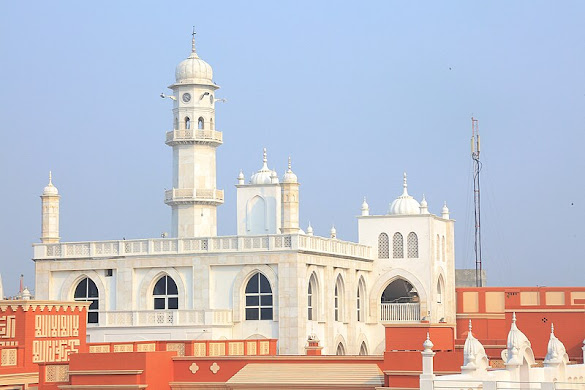
Masjid Aqsa (Qadian, Punjab)
Masjid Aqsa in Qadian, Punjab, is an exquisite spiritual and architectural landmark that holds immense significance for the Ahmadiyya Muslim community. Nestled in the heart of Qadian, this grand mosque represents the center of faith for the followers of the Ahmadiyya movement, a place where devotion, history, and beauty intertwine. Nearest Bus Stand: Qadian Bus Stand (Approx. 1 km) Nearest Railway Station: Batala Junction Railway Station (Approx. 15 km) Nearest Airport- Chandigarh International Airport
The Aqsa Mosque (Masjid Aqsa), nestled in the heart of Qadian, Punjab, stands as a beacon of spiritual devotion and architectural grandeur. As the largest and oldest mosque in Qadian, it holds a central place in the hearts of the Ahmadiyya Muslim Community, embodying both their history and their faith. Built in 1876 by Mirza Ghulam Murtaza, the father of Mirza Ghulam Ahmad, founder of the Ahmadiyya movement, Masjid Aqsa is an emblem of both historical and religious significance. Originally constructed as part of the ancestral house of the Mirza family, the mosque sits close to the iconic White Minaret, adding to its spiritual aura. Its serene beauty and commanding presence are set within the Ahmadiyya Mohallah of Qadian, offering a peaceful retreat for worshippers and visitors alike. The mosque’s architecture speaks of traditional Islamic design elements, with its sprawling prayer halls, high arched entrances, and intricate detailing, reminiscent of Mughal influences. The mosque was initially built to accommodate 200 worshippers, but over the years, under the careful stewardship of the Ahmadiyya administration, it has undergone numerous renovations and expansions. By 2014, its capacity had grown remarkably, accommodating up to 15,000 devotees. The spiritual significance of this mosque is felt not only in its size but in the profound sense of history it carries. One noteworthy moment in its evolution came in January 1938, when for the first time, a loudspeaker was installed in the mosque. The occasion was marked by a memorable sermon delivered by the Second Caliph, Mirza Basheer-ud-Din Mahmood Ahmad, a testament to the mosque’s ongoing role as a center for Islamic teachings and community gatherings. Over the decades, Masjid Aqsa has continued to evolve, reflecting the growth of the Ahmadiyya community worldwide. Despite its many renovations, it retains the essence of its original structure, a reminder of the mosque’s origins and its journey through time. It is more than just a place of worship; it is a living symbol of the Ahmadiyya movement’s commitment to peace, tolerance, and spiritual enlightenment. Today, Masjid Aqsa remains a focal point for worshippers, scholars, and tourists alike. Its legacy of faith, combined with its architectural beauty, offers a unique spiritual and cultural experience for anyone visiting the historic town of Qadian.

